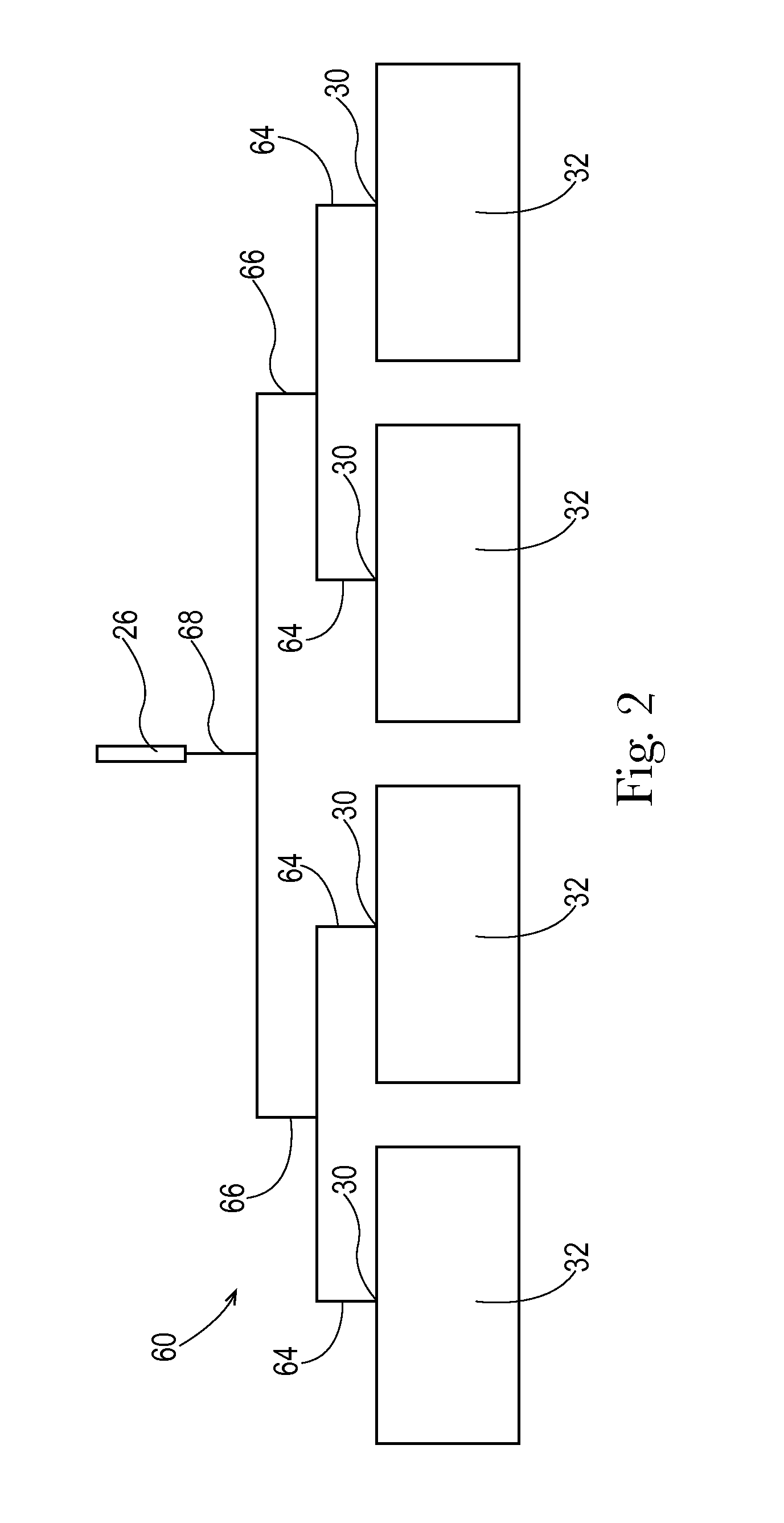Reduced Size Runner for an Injection Mold System
a technology of injection molding and runners, which is applied in the field of apparatus and methods for injection molding, can solve the problems of excessive shrinkage of molded articles from the mold cavity, undesired high dimensional variation, and large volume of plastic, and achieves the effect of increasing the number of total cavities that can be provided in a given mold, reducing the size of runners, and increasing the number of total cavities
- Summary
- Abstract
- Description
- Claims
- Application Information
AI Technical Summary
Benefits of technology
Problems solved by technology
Method used
Image
Examples
example 1
[0057]A test was performed to determine how runner sizes could be designed for use with a substantially constant pressure injection molding process as compared to a conventional variable pressure injection molding process. The test was performed using 20MFI Braskem Polypropelene Homopolymer FT200WV (with no colorant). The test was performed using an Engel 100TL 100-ton hydraulic tiebarless injection molding press. The test was performed with a mold temperature at a constant 65° F. The Melt Temperature was 420° F. For the conventional variable pressure process, a mold viscosity test was performed to establish the injection rate. A set point of 4.5 in / second was used for each run, or volumetrically, 2.65 in3 / sec (43.43cm3 / sec). For the substantially constant pressure process, or “SCPP”, the pressure and time were controlled to achieve the given part weight of 2.51 grams without freezing the gate or runner that would lead to short shots.
[0058]A steel prototyping / experimental mold as de...
PUM
| Property | Measurement | Unit |
|---|---|---|
| thickness | aaaaa | aaaaa |
| hydraulic diameter | aaaaa | aaaaa |
| diameter | aaaaa | aaaaa |
Abstract
Description
Claims
Application Information
 Login to View More
Login to View More - R&D
- Intellectual Property
- Life Sciences
- Materials
- Tech Scout
- Unparalleled Data Quality
- Higher Quality Content
- 60% Fewer Hallucinations
Browse by: Latest US Patents, China's latest patents, Technical Efficacy Thesaurus, Application Domain, Technology Topic, Popular Technical Reports.
© 2025 PatSnap. All rights reserved.Legal|Privacy policy|Modern Slavery Act Transparency Statement|Sitemap|About US| Contact US: help@patsnap.com



